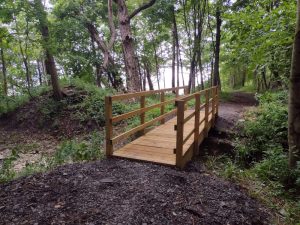The New York State Department of Environmental Conservation (DEC) recently completed two projects to create new spawning habitat for native fish that are critical for local economies and ecological diversity in Jefferson County.
Implemented in partnership with the U.S. Fish and Wildlife Service and U.S. Geological Survey, the aquatic-habitat improvement projects focused on the Black River below the town of Dexter and in Chaumont Bay. Funding for the $750,000 project, including site evaluation and construction, came from the U.S. Environmental Protection Agency’s Great Lakes Restoration Initiative.
The Black River is one of only five high-volume tributaries to New York’s portion of Lake Ontario between the Niagara River and the St. Lawrence River. It’s the only tributary that provides swift-water spawning habitat for the eastern basin of Lake Ontario. The completed project created new 512-foot-long spawning habitat for walleye and lake sturgeon.
(Sponsored)

Ask the Expert: Investing in the Future with Registered Apprenticeship
In today’s competitive job market, finding and retaining top talent can be incredibly challenging. For companies, Registered Apprenticeship is an investment not only in its employees but in its future.

Avoid the Employment Law Mistakes that Threaten Your New Business
Amid the excitement and uncertainty that accompany the opening of a new business, entrepreneurs often overlook basic employment law requirements that can cost them dearly. These include how they classify
Chaumont Bay in the lake’s eastern basin supports one of the last remaining spawning populations of lake whitefish and cisco in the lake. These fish, native to the lake, were part of the historic prey fish community, but their populations have been far below historic levels for several decades. The four separate reefs at various depths and will also facilitate targeted research into the physical drivers of egg deposition, egg survival, and fry emergency to inform future habitat-improvement projects.
Gian Dodici, a fish and wildlife biologist at the U.S. Fish and Wildlife Service’s New York field office, noted these projects benefit both wildlife and people. “These efforts are key for sustaining healthy populations of fish species, and they provide benefits to communities by supporting an economically important fishery,” Dodici said.
The projects have the potential to significantly increase walleye and lake-sturgeon production, according to Dawn Dittman, a scientist with U.S. Geological Services. “These spawning habitat improvements will benefit valuable fish populations and the watershed as a whole — including the people that depend on it,” she said.
The DEC and other organizations will monitor the effectiveness of the new spawning areas.




